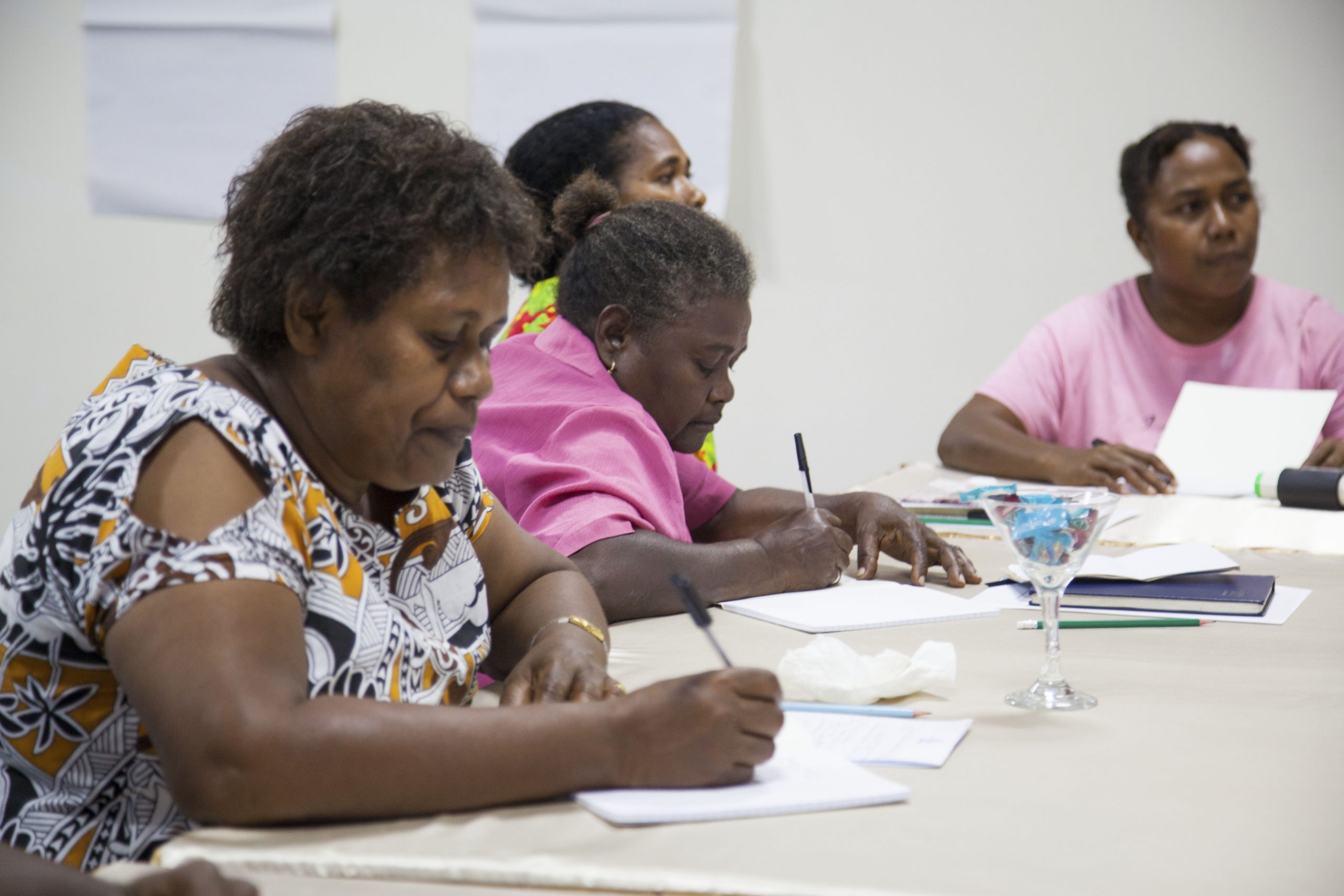Financial Inclusion: Women a Priority
By Natasha Eddie
Article No. : 10/2021

During the implementation of the previous National Financial Inclusion Strategy 2, there were lessons
drawn based on interactions with stakeholders on the barriers that limited women to fully engage in the
financial services.
In this article we will highlight few of the barriers and look at the current strategic objectives implemented
to address these barriers in the next 5 years.
Women make up 48 percent of the population in Solomon Islands, based on the latest official statistics
report. And majority of these women are living within the rural areas. With the geographical locations,
cultural factors and expectations, women have faced barriers to accessing financial services to meet their
financial demands and supplies.
On the demand side, barriers such as cultural factors and expectations, limited opportunities to
participate in economic activities, lack of financial literacy and proximity to nearest financial access points
are evident.
On the supply-side, barriers such as lack of proper documentation to fully engage in financial services, as
well as lack of appropriate products and services that suits their needs, limited women’s full engagement
in financial services.
According to Central Bank of Solomon Islands Manager for Financial Inclusion Unit Linda Folia, they are
working to improve the gender disparity of women in the financial sector.
“The key focus is to continue with financial inclusion efforts to improve gender disparity in particular,
women participation in the financial sector.”
Folia said there is a proposed policy that will address the identified gender gaps in Solomon Islands and
propose appropriate interventions for women participation in financial areas.
The policy will also support the Government’s Ministry of Women, Youth, Children & Family Affairs
(MWYCFA) recently launched National Strategy on the Economic Empowerment of Women and Girls
2020-2023 (NSEEWG), which was derived from the overarching Gender Equality and Women’s
Development (GEWD) policy, particularly policy objective outcome 2 on “Improved Economic Status of
Women.”
“The development of the policy will begin with identifying the gaps and barriers to women participation
in the financial sector and propose some interventions that CBSI & all stakeholders can implement.”
“Some key components we may also consider include interventions to increase access and usage of
financial services through appropriate tailored products.”
Folia said the YouSave products has shown this to be possible. “Others are appropriate interventions for
women in MSMEs in terms of access to finance, mentoring & business coaching; Financial Literacy, etc.”
“The initial assessment will assist to identify gaps in women participation in business however, there are
varied barriers on the demand-side and supply-side as mentioned earlier,” she said.
The mission of the newly launched National Financial Inclusion Strategy 3 (NFIS-3) is to increase active
users of financial accounts from 283,954 to 400,000 of which 50 percent would be women.
This can only be achieved through the following objectives out lined in the new NFIS -3 document. The
objectives are;
• Amplify the reach and quality of digital financial services products and channels
• Improve and promote MSME finance
• Include women, youth and rural adults as fully engaged participants in the national financial
sector
• Build financial empowerment in ways that are motivating, actionable and relevant to daily
life
• Develop and implement Data & Measurement Framework.
Hence the key priority for the next 5 years is to focus on improving ways to ensure by 2025 more
women can access quality and affordable financial services and products and be able to know how to
use them, to improve their livelihood within the growing digital economy.

